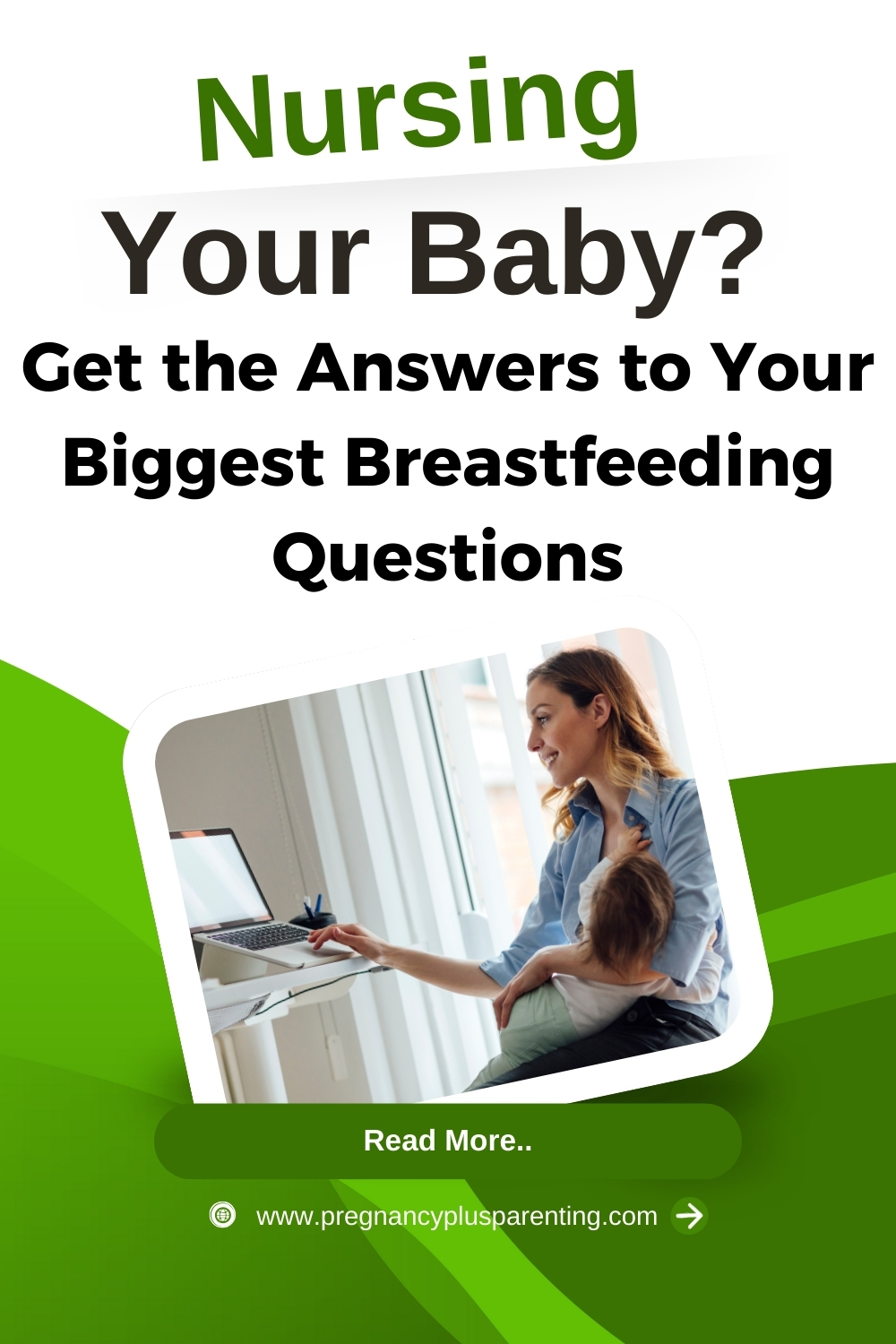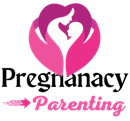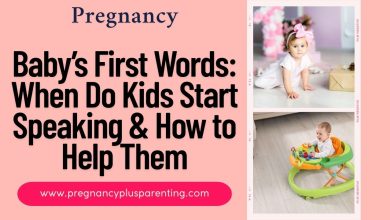Nursing Your Baby? Get the Answers to Your Biggest Breastfeeding Questions
Breastfeeding is far from just feeding. The act of breastfeeding satisfies all of the baby’s needs, from nutritional intake to security and emotional bonding, but breastfeeding is also good for the mother.
In fact, nature has ensured that breast milk contains everything babies need, in just the right amount.
Breast milk adapts to the baby’s rapid development and changes accordingly throughout the breastfeeding period.
It is therefore no wonder that the World Health Organization (WHO) and the National Breastfeeding Committee at the Federal Institute for Risk Assessment recommend that babies be exclusively breastfed, if possible, until at least the sixth month of life.
Breastfeeding also helps the mother with a calming effect on her psyche once the breastfeeding relationship has settled down and common initial difficulties have been overcome.
The positive effect of breastfeeding on the mother also has a positive effect on the body’s recovery after birth and thus brings health benefits.
For example, the risk of developing breast and ovarian cancer is significantly reduced. Breastfeeding also makes it easier to lose weight.
And breastfeeding is simply convenient because you don’t have to worry about the amount or temperature, you don’t have to worry about the ingredients, and it’s free.
Despite all the advantages, breastfeeding is something both mother and child have to learn first, and all new parents have many questions:
How long and how often should you breastfeed?
What is the best way to breastfeed while carrying?
Which breastfeeding position is best?
Why does a breastfeeding strike occur and why does the baby suddenly not want to breastfeed?
Do I have too little milk?
When is it recommended to supplement feeding or even wean?
Can I take ibuprofen for pain relief while breastfeeding?
In this article you will find answers to these and other questions about breastfeeding.
How often should you breastfeed?
In the first few weeks after birth, an infant should be breastfed at least eight to twelve times a day. This is a general recommendation that many unfortunately confuse with a rule of thumb.
So, it’s best to throw them overboard and feed them ad libitum, as needed. What does that mean specifically?
In the past, babies were almost forced to follow a certain breastfeeding rhythm, for example by only being put to the breast every three or four hours.
Today we know better, namely that the baby’s needs regulate milk production and set the pace for the breastfeeding relationship.
In the first few days after birth, it is particularly important to ensure that the baby is fed frequently.
First, the mother’s breast produces what is known as colostrum, also known as pre-milk, which is a real nutritional package for newborns.
It is present in small quantities and is light and therefore quickly digestible, which is suitable for the tiny baby stomach, which also has to learn how to suckle optimally at the breast.
Frequent breastfeeding also triggers milk let-in around the third to fifth day after birth and builds up milk production.
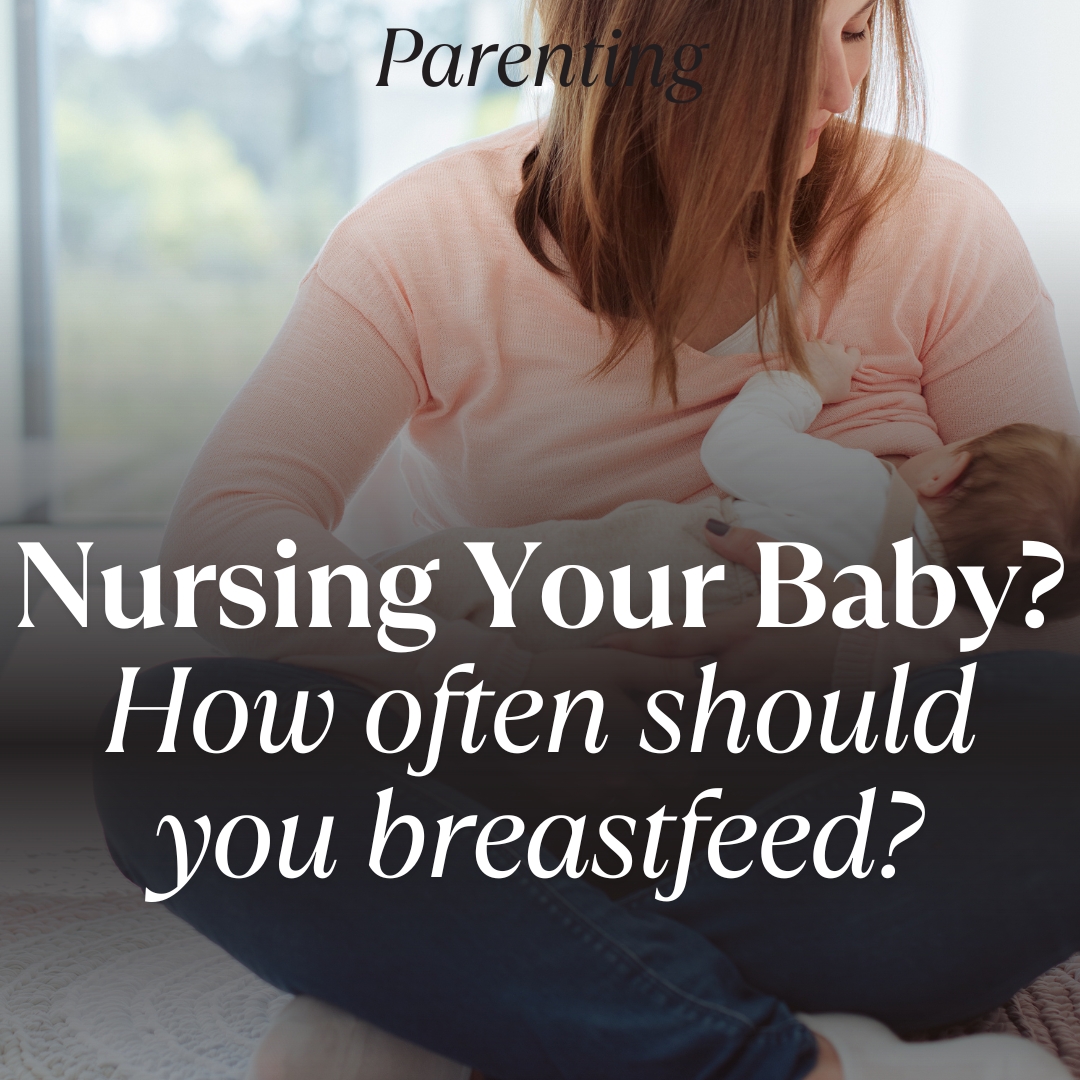
Every baby is different and has individual breastfeeding needs.
Some babies suckle particularly efficiently and less frequently, while others want to breastfeed for shorter periods but more often, or fall asleep quickly while breastfeeding.
However, there are similar signs that all babies want to be breastfed that you should look out for, namely:
• Sucking movements with the mouth or
• Pursing the mouth
• Turning the head back and forth or
• searching movements of the head
• Sucking on hands and fists
Crying and screaming are late signs of hunger after the first ones have been overlooked.
In such cases, it is difficult to put the baby to the breast and must first be calmed down.
This is also a good reason to breastfeed according to your needs in order to keep stress away from him and yourself.
Please also note that breastfeeding is not only for feeding, but also satisfies other needs of the baby and helps him or her to experience comfort in times of pain and discomfort and to feel safe and able to calm down in times of anxiety or tiredness.
So let them suckle at the breast!
Can you breastfeed too often?
This question can arise for mothers, especially when breastfeeding continuously , but unlike with bottle feeding, you cannot overfeed a baby.
Especially in the first few weeks, many babies are often at the breast for long periods of time, and not just in the evening.
This is then said to be a child that is “clustering”, which means “to accumulate” or “to ball up”.
Cluster feeding or cluster breastfeeding is a conventional phenomenon, again established by nature for the well-being of infants.
Many mothers fall into the error of thinking that they do not have enough milk when breastfeeding continuously.
There’s even a term in professional circles for this subjective perception: Perceived Insufficient Milk (PIM). It’s based on misconceptions about breastfeeding.
Mothers observe with concern that they hardly produce any milk in the first few days, that their breasts become softer and smaller, that they no longer leak, that the child seems to breastfeed too rarely or too often, that there is not enough milk when pumping, that the baby’s drinking behavior changes or that it cries when it is put to the breast.
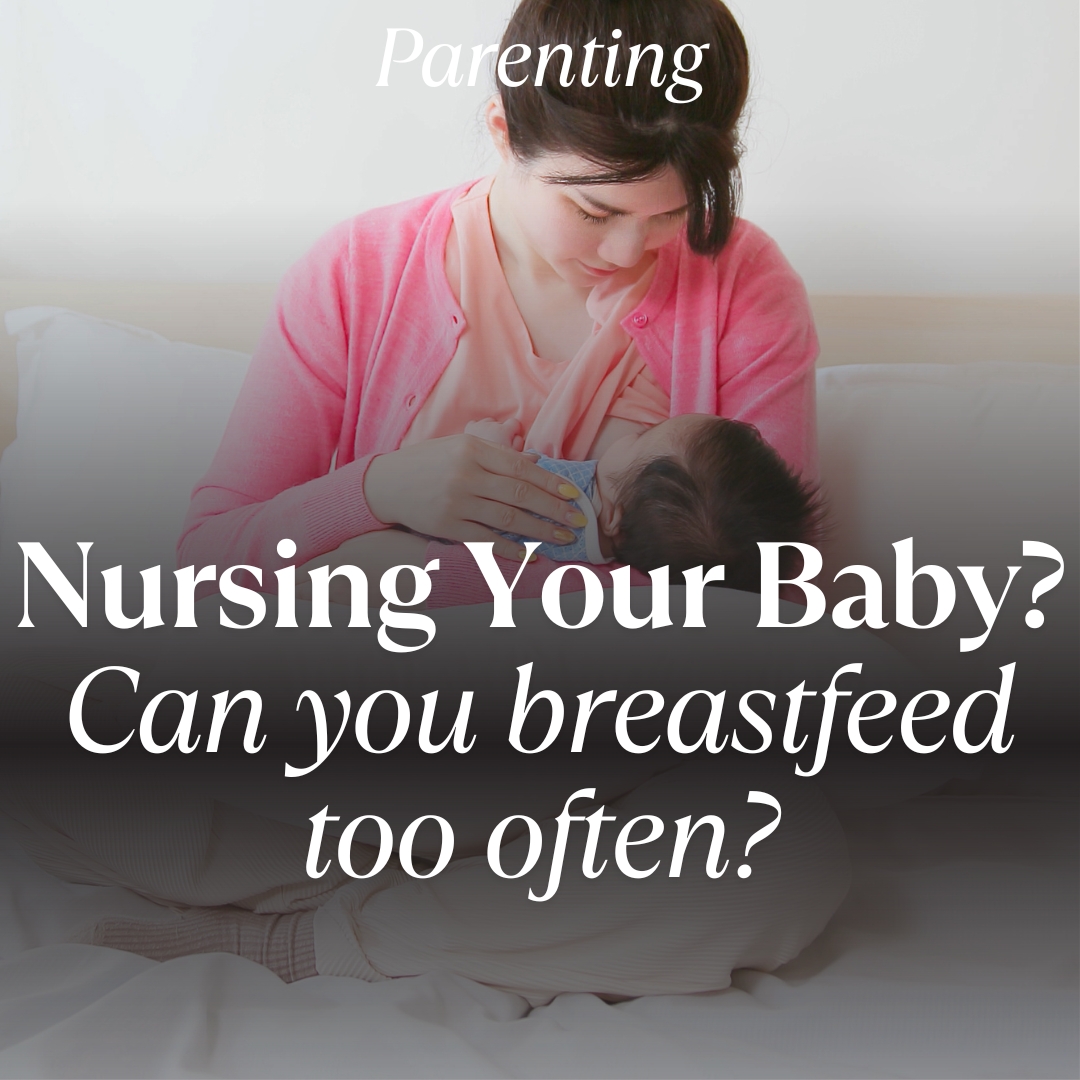
These are rarely abnormalities, but rather have to do with the stabilization of milk production and the breastfeeding relationship as well as with the development of the child.
As already mentioned, breast milk is so easily digestible that the baby’s small stomach is soon empty; more precisely, it has already digested the small amount of food in about 90 minutes.
Now we all know that newborns sleep a lot .
When breastfeeding continuously, a baby also drinks in advance for a longer sleep phase until the next feeding.
Don’t be alarmed if you hear from other parents that their baby is behaving differently, clustering more or less. As I said, every baby is different.
And above all, don’t let yourself be confused by false rumors that frequent breastfeeding is bad for the baby and can lead to stomach pain and bloating .
It is a misconception that such reactions can occur when undigested milk meets digested milk in the stomach.
How long should you breastfeed?
Mothers are often unsure about how long they should breastfeed, but in fact, you can never breastfeed for too long.
Milk production works according to the supply-demand principle, so guidelines are unnecessary.
The question “How long should you breastfeed for?” is also superfluous.
However, you may also find it helpful to know that the WHO recommends breastfeeding for at least the first two years of life, while it does not provide any information on an upper age limit.
There is actually nothing wrong with breastfeeding your child even until primary school age, provided that the child also receives complementary foods and solid food.
Long-term breastfeeding and tandem breastfeeding only concern the child and mother
Contrary to what some might think, breastfeeding beyond the first year is definitely not harmful to a child. So, all those mothers who breastfeed their children into their second, third, fourth, etc.
year of life, value the intensive bond with the child, want to do the right thing and do not force weaning.
If the baby has a brother or sister, the mother can also tandem breastfeed, i.e. breastfeed two children at the same time .
Big changes are coming for the whole family and tandem breastfeeding can calm the sibling and show them that they still have a safe haven at mom’s breast.
The positive effects of tandem breastfeeding on both children, sibling and infant, are worth emphasizing.
This strengthens the older child’s immune system and protects it from illness, while maintaining the familiar emotional bond with the mother .
The older child can make breastfeeding easier for the baby by regulating the milk flow and promoting milk production, for example in cases of milk congestion.
Of course, supply and demand also determine milk production in the case of tandem breastfeeding in such a way that the needs of both children are met.
The child can be breastfed to sleep
Mothers are often unsettled by critical voices that warn against letting the child fall asleep at the breast in order to prevent it from becoming accustomed to it.
This is said to have a detrimental effect on the development of babies’ sleeping habits, which is why some children are even subjected to sleep training .
So mothers sometimes wonder how long they should breastfeed to avoid breastfeeding their baby to sleep.
There is no reason why the baby should not fall asleep while breastfeeding unless the mother feels seriously uncomfortable or disturbed.
Due to developmental reasons, a baby can only sleep through the night from the sixth month of life and will wake up at night even if it has not been breastfed to sleep.
Many parents report that babies fall asleep best at the breast, which is no surprise because it releases happiness and cuddle hormones and the physical contact also makes them feel safe and secure.
Sucking at the breast also has a tiring and calming effect.
Why supplement or introduce mixed feeding?
There are many different reasons why breastfeeding mothers decide to supplement their feeding , for example (earlier) return to work and personal views, weight loss of the child, medical problems and pain when breastfeeding such as sore nipples , but also insecurity and lack of knowledge.
Supplementary feeding in addition to breastfeeding is recommended if the baby loses weight significantly and quickly.
Supplementary feeding is also more common after a Caesarean section, as milk production takes longer to start than with a conventional birth, which can lead to weight loss in the baby, among other things.
If milk production is delayed or something goes wrong with it, there may be medical reasons behind it, such as narrowed blood vessels in the breasts (vasospasm) and other complications that can occur at the beginning of breastfeeding or later.
Anatomical peculiarities of the nipples or in the mouth area of the baby, such as a shortened lip and tongue tie, can also be reasons for supplementary feeding.
I think that most breastfeeding women today have already heard of the so-called nipple confusion that can occur after the baby has tasted the bottle.
In some cases this can even lead to the child biting the breast while breastfeeding .
But most of the time, child bites are the result of incorrect attachment and an unfavorable breastfeeding position.
There are so many positions for breastfeeding , but there are no ideal breastfeeding positions that are equally suitable for all mothers and babies. The proof of the pudding is in the pudding.
The best way to find out is to talk to a lactation consultant or midwife.
Due to the high demand, you should also seek appropriate breastfeeding advice and look for a midwife early on, ideally while you are still pregnant .
There are also trained IBCLC lactation consultants and FeS consultants who can provide independent information about infant formula and infant formula and who prioritize your baby’s personal well-being when making your selection.
It does not necessarily lead to nipple confusion or other breastfeeding difficulties once the baby has tasted the bottle.
If the mother does everything right, the breast-bottle combination called mixed feeding works well for everyone involved.
Professional advice is always recommended in cases of supplementary feeding and mixed feeding, as mistakes in handling can lead to problems for both baby and mother, such as digestive problems or injured nipples.
Can I safely take ibuprofen while breastfeeding?
A maximum of 800 milligrams of ibuprofen is acceptable as a single dose during breastfeeding, although no more than two such single doses should be taken daily, or no more than 1600 milligrams in total per day.
It has been proven that the drug does not pass into breast milk at such quantities and no degradation products of the drug could be found there.
However, you should not take ibuprofen for longer than 10 days in a row, otherwise your baby will be affected.
In general, breastfeeding women should of course try to avoid taking painkillers and medication and instead resort to other methods, such as drinking plenty of fluids, getting enough exercise in the fresh air, catching up on sleep and reducing stress.
If none of this helps, you should definitely talk to your doctor.
If it is unavoidable to take certain medications that are incompatible with breastfeeding, a break from breastfeeding or even weaning is recommended.
How do breastfeeding and babywearing work together?
The baby’s head should always be at the right height, while his back must be sufficiently supported so that he can breastfeed in an upright position in the carrier.
When carrying a baby in the narrower sense, it is often necessary to loosen the shoulder straps or the hip belt so that the baby can sink to the correct height.
A baby carrier , sling or Mei Tai can be very helpful if you want to breastfeed your baby while carrying him, but first you should practice at home or in a quiet and familiar environment so that you can both relax.
Using a baby sling requires practice anyway, although ring slings are easier and quicker to thread and fine-tune, while conventional baby slings are a bit more complicated because there are different ways of tying them.
Some mothers feel uncomfortable carrying their baby in a sling that they knotted themselves, so they prefer to use baby carriers in the narrower sense or Mei Tais, a kind of hybrid between a sling and a baby carrier.
To ensure that you feel comfortable while breastfeeding in the carrier, you should make sure you wear appropriate clothing.
If you have to pull up a top to get your baby to your breast, this can cause unnecessary stress or discomfort in public.
A special T-shirt that you pull aside or a nursing bra that you can simply open up makes it easier for the child to access the breast and helps against the feeling that the bare breast is exposed to possible glances from the outside.
Why does the baby refuse the breast?
It is stressful for both mother and baby when breast refusal occurs, which can have various causes, such as a milk ejection reflex that is too strong or too weak, overstimulation and stress, pain and discomfort (e.g. due to thrush, reflux, middle ear infection or cold).
A blocked nose in the baby , a nipple that is difficult to grasp from the mother or an unusual taste of the breast milk, caused by a breast infection, medication or diet or another pregnancy, can also lead to the baby not wanting to drink .
It happens that breastfeeding women think that their baby does not want to breastfeed at all.
However, it would be very unusual if breastfed children wanted to wean themselves in the first year of life.
Breastfeeding problems are often related to incorrect latching. The environment and conditions also play a role. When did your baby breastfeed in a relaxed manner? In a quiet, dimly lit bedroom?
While you were carrying it? It takes patience to make changes to the environment and determine if there are any underlying causes of breast refusal.
However, the baby’s crying when breastfeeding can be very stressful and it is often difficult to find the reason behind the baby’s rejection behavior .
If it takes longer, it is best to see your pediatrician.
If your baby is thriving and there is no weight loss, then there is nothing wrong with looking for the reasons for breast refusal on your own and waiting.
On the other hand, it may be necessary to express milk and spoon-feed it to the baby so that he or she gets enough nutrition until he or she wants to breastfeed again.
Expressed breast milk can also be frozen , but it is important to do it correctly.
Because of uncertainties, fears and great worries, it is advisable, especially for mothers of their first child, to consult a specialist.
When and how to wean?
When you wean is your decision and the way you wean is more important than the timing.
Whether you’re returning to work, want to reclaim your body, or need to stop breastfeeding for medical reasons, you have several options.
Weaning immediately after birth
Even if the baby is never breastfed and no medication is taken, milk production still starts and the breasts must be emptied, whether by hand or with a breast pump.
It is important not to over-empty so that milk production is not accidentally stimulated and instead not to empty the milk completely and infrequently so that the milk supply can decrease.
With this method, a slow hormonal change takes place and there is still the possibility of changing your mind and still breastfeeding.
However, it is time-consuming and often associated with discomfort such as tight or painful breasts.
If weaning must or should happen quickly , you can also take medication that inhibits prolactin production and thus suppresses milk production.
If you already know before the birth that you do not want or cannot breastfeed, you will probably have stated this in your birth plan along with your decision to take medication.
Although the new mother is usually spared the unpleasant tightness of her breasts, sometimes the medication does not work.
In addition, the involution of the uterus and body is slowed down and breastfeeding is no longer possible if the mother changes her mind.
Weaning during and after the first six months
Without medication, mother and baby can get used to the new situation, with breastfeeding sessions being gradually reduced.
During further infant feeding, breast milk is gradually replaced with PRE milk.
Partial weaning is also possible, which will be of particular interest to working mothers.
When the mother is away at work, the baby is fed infant formula or, after four months of age, complementary foods. Breastfeeding continues when the mother is home.
Weaning after the first six months works in a similar way, with complementary foods serving as support and gradually replacing breastfeeding.
In this case too, the pace depends on the needs of the baby and the mother.
It takes time for the child to learn to eat.
In general, you should give your baby infant formula after the first six months of life, even after weaning, until he or she is one year old.
You can support the reduction of milk production with various types of tea , such as sage tea, parsley tea or peppermint tea.
Weaning after one year
In such a case, the mother is best advised to skip one breastfeeding session per day that the child seems to particularly need and offer other food instead.
Distraction is essential. Initially, it’s better to wait a few days before stopping the next breastfeeding session.
Of course, you can also skip those breastfeeding sessions that the child can manage without.
When breastfeeding for a long time, mothers often decide that the initiative to wean should come from the child.
This can sometimes take several years, which people in our society often find strange.
But you shouldn’t let that intimidate you and under no circumstances should you base your decision on the opinions of others.
As already mentioned, the length of time you breastfeed is only your and your child’s concern.
In addition, the WHO, the National Breastfeeding Commission and the German Nutrition Society emphasize the benefits of breastfeeding.
What should you consider when it comes to nutrition while breastfeeding?
Basically, the same applies during breastfeeding as during pregnancy, because a balanced and healthy diet is still of crucial importance for the well-being of the mother and the child.
The good news is that after the birth you can once again enjoy raw milk cheese and cheeses such as Gorgonzola and Camembert , raw meat and fish products such as tea sausage and smoked salmon and even eggs with runny yolks, as there is no longer any risk of toxoplasmosis and listeriosis for the baby.
So while you are breastfeeding you can actually eat whatever you want and whatever is healthy.
However, caution is still advised, as certain spices, such as sage or peppermint, are suspected of inhibiting milk production.
Others, however, are said to promote milk production. Turmeric, for example, is said to have a beneficial effect on milk production, although this has not been scientifically proven.
Your diet should include fish and meat, dairy and whole grain products, legumes, fruits and vegetables, nuts and vegetable oils so that your increased need for nutrients, minerals and vitamins during breastfeeding can be met and your child does not lack anything.
Some mothers want to lose weight after giving birth and consider going on a diet or skipping meals. However, this is strongly discouraged.
Diets and a sudden reduction in food intake can cause harmful substances to form in the body when fat reserves are released, which your child receives through breast milk.
In addition, both pregnancy and breastfeeding are the wrong times to go on a diet because they can lead to a lack of nutrients that you and your baby desperately need to be protected from diseases and other problems and to thrive.
Instead, you can try to keep your snacks low in fat but still healthy with fruits and vegetables and avoid carbohydrates in the evening.
Spicy food is also OK for babies and can help with weight loss by stimulating digestion.
You can start with moderate exercise and light sports after the postpartum period to slowly but surely lose the pounds.
If you are not a meat lover, it is advisable to at least include fish in your diet, otherwise no DHA (docosahexaenoic acid) can get into your breast milk, which is a fatty acid important for your baby’s brain development.
A vegan diet requires in-depth expertise to supplement nutrient deficiencies.
Alcohol is also taboo during breastfeeding, as the baby also gets it through breast milk.
Nicotine and drugs must be strictly avoided as they have been proven to cause serious damage to the child’s health.
Caffeinated drinks should still be consumed in moderation, so up to two cups of coffee or two glasses of black tea or cola per day are fine.
Although abdominal pain and gas in babies rarely have anything to do with your diet, you should monitor whether discomfort occurs after eating certain foods.
If you suspect a connection, just leave them out for now.
Final thoughts
The WHO, the National Breastfeeding Commission and the German Nutrition Society are some of the organizations that explicitly recommend exclusively breastfeeding babies in the first months of life, at least until the sixth month.
The fact that reality often looks different does not necessarily have to be a disadvantage for babies and mothers.
It is not only breastfeeding that ensures that the baby enjoys the (physical) closeness of the mother and direct skin contact.
A close mother-child bond can also develop with a bottle. And, of course, between baby and dad.
The fact is, however, that the composition of breast milk has not yet been replicated and no formula can replace its protective functions.
Furthermore, breastfeeding has proven positive effects on the mother’s health. These are reasons why breastfeeding is promoted with such emphasis.
For many mothers and their babies, the first few weeks are associated with great challenges and often difficulties, because breastfeeding is something that has to be learned first, which applies to both mother and baby.
It is best to have a midwife or lactation consultant on hand to provide advice and support in case of problems or uncertainties.
This article addresses common questions new mothers have about breastfeeding.
How often and how long you should breastfeed depends on the baby’s needs and also on the mother’s needs.
Guidelines are for guidance only and should not cause concern if, for example, your baby wants to breastfeed more or less often.
You should also not be intimidated if you decide to wean your baby early for personal reasons.
To rule out medical causes for breastfeeding difficulties, you should consult your doctor as soon as possible if you suspect this.
The sooner you address the cause, the faster you can recover.
